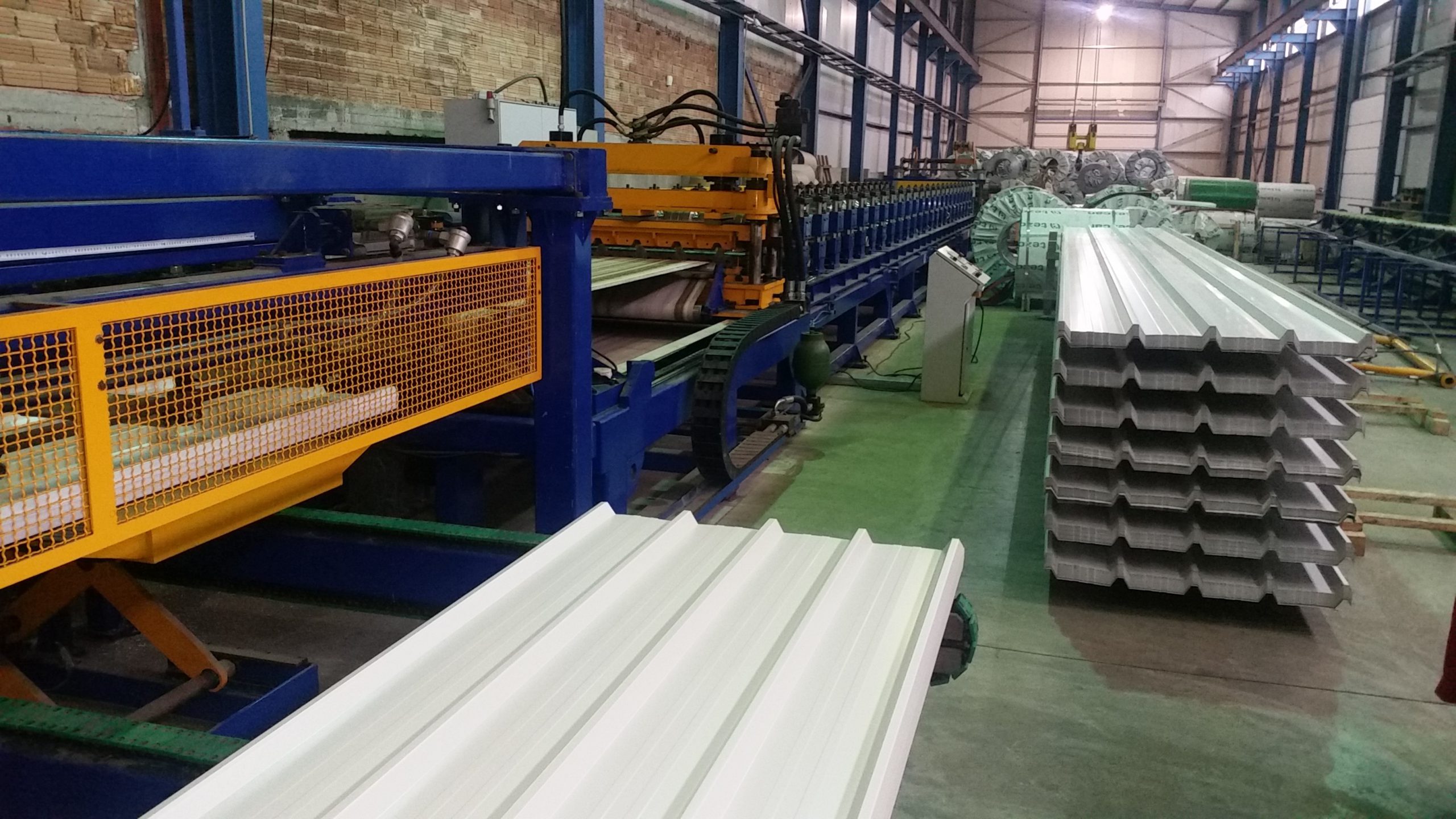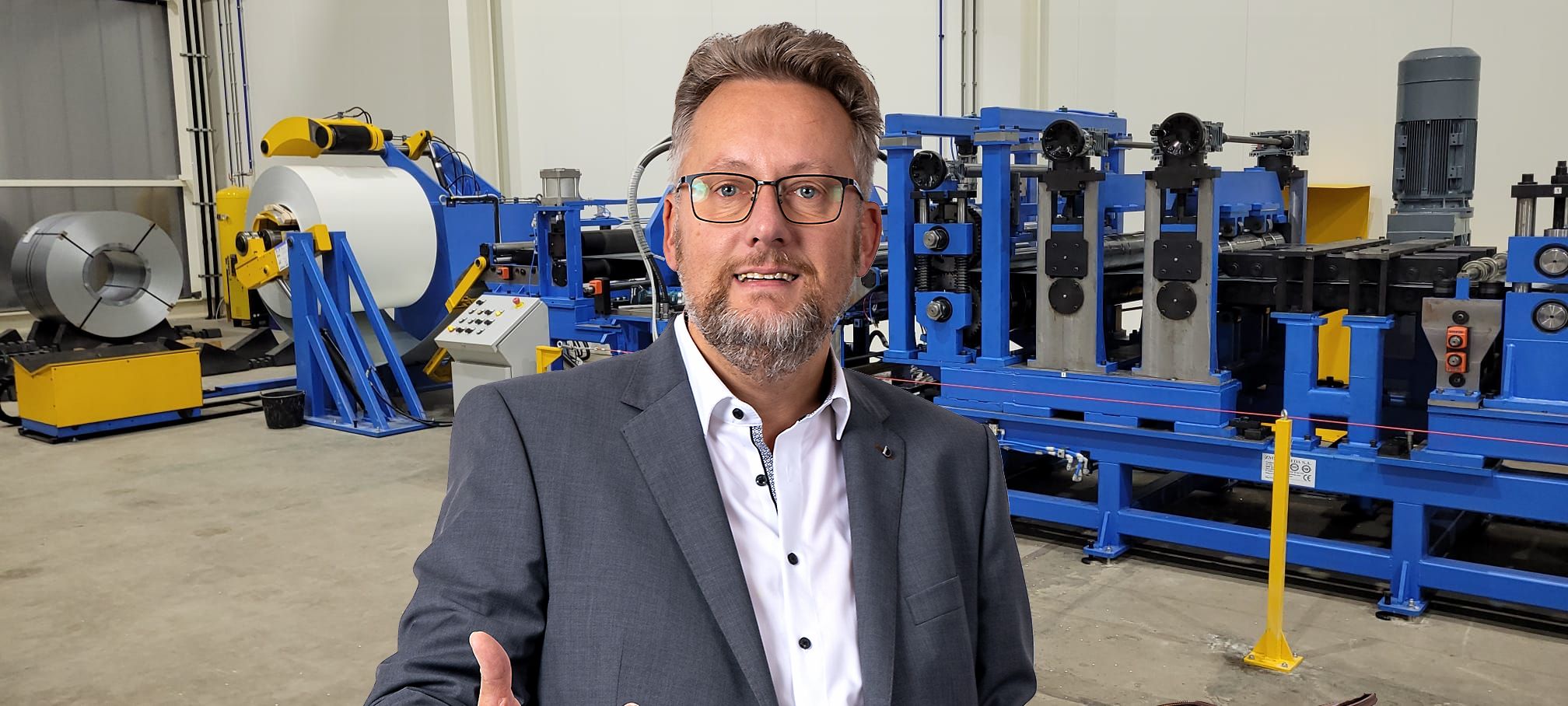Roll forming is an important process in metalworking to form metal sheets or strips into specific profiles using rollers. This process is widely used in various industries, from automotive to construction. Let’s take a closer look at exactly what role-forming means, how it works and why it’s so important.
What is Roll Forming?
Roll forming (also called profiling or cold rolling), is a forming process in which flat metal sheets or long strips (usually coiled strip steel; coils) are transformed into complex profiles using a series of rolls. The strip of strip steel passes through sets of rollers mounted on successive stands. Several guide rollers are needed that step by step press the sheet into the desired shape, because the deformation per roller is limited.
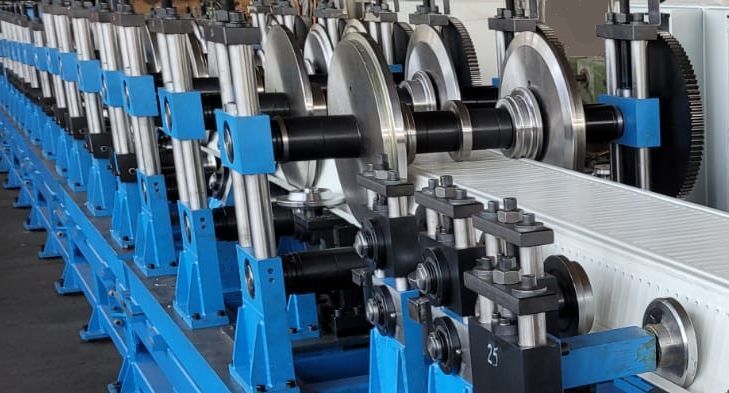
The Roll Forming Process Step by Step
The roll forming process is customized and thus consists of several steps that are carefully executed to achieve the desired result. First, the metal sheet is fed into the roll forming machine, which is guided by a series of rollers, each of which has a specific shape. These rolls gradually bend and deform the metal into the desired shape. The process ends with cutting the formed metal to the correct length.
Flower Pattern
The rolls are carefully manufactured using a so-called flower pattern, which provides the successive changes to the metal sheet. The shape of each roll is made based on the individual parts of the flower pattern. Roll contours are then derived from the flower pattern profiles. Each of the colors in the flower pattern below illustrates one of the stepwise bends used to complete the profile. The individual colors are a single bending operation.
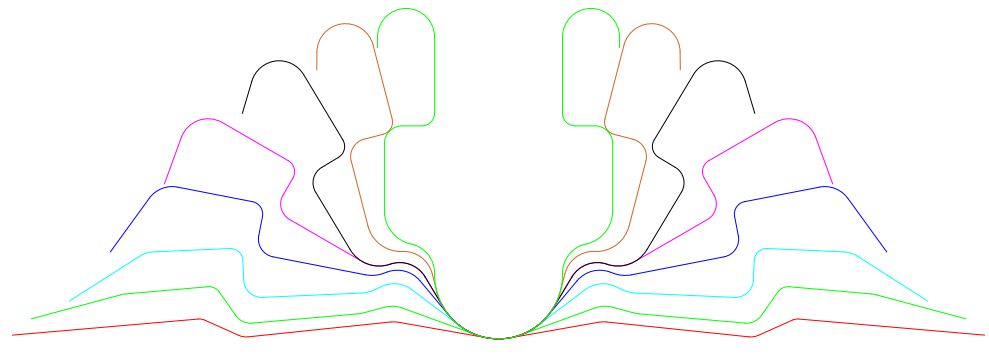
Roll forming is ideal for producing parts with a constant profile with long lengths and in large quantities. During roll forming, various operations such as punching, cutting, etc., can take place.
The process is often used to produce metal profiles for applications in construction, automotive, horticulture, furniture manufacturing and more. Understanding roll forming requires an understanding of machining and the physical properties of metals.
Roll Forming Machine, or Roll Forming Line
A roll forming machine is the basic machine on which a profile is produced. The machine consists of a number of back-to-back roll forming stations, each consisting of an upper and lower shaft with different profile rolls.
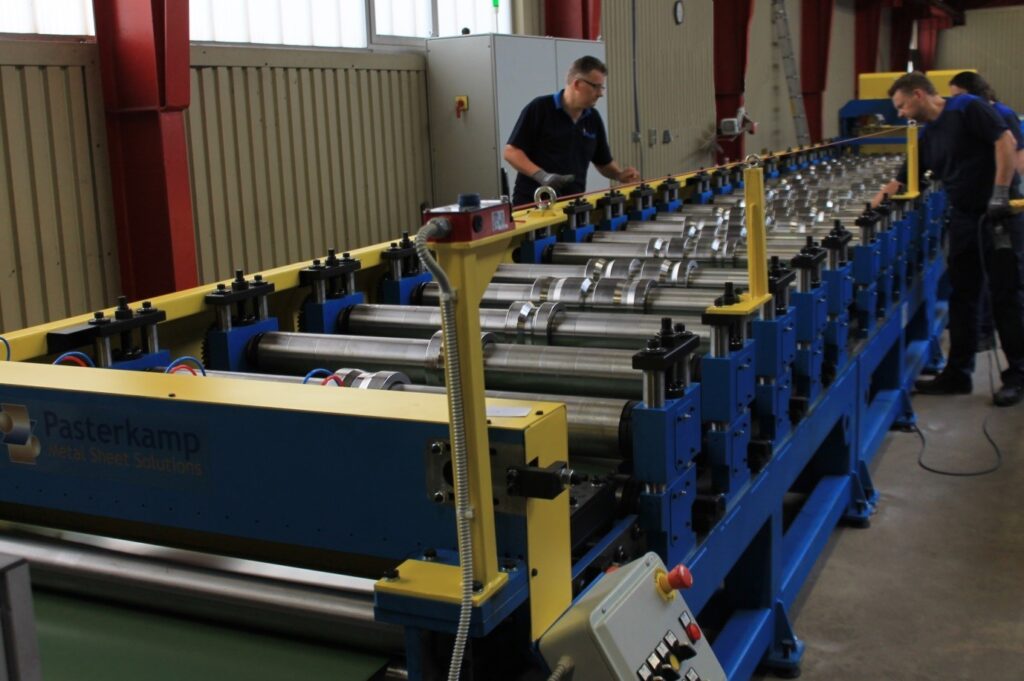
A roll forming line can consist of several parts, e.g.:
- Unwinding reel (decoiler) with coil carriage
- Straightener
- Punching installation
- Roll Forming Machine
- Cut-off installation
- Stacker
1. Unwinding reel (decoiler)
A coil of sheet material is placed on the core of the reel. The core of the unwinder (decoiler) can change in diameter so that the coil can be clamped and stay firmly on the mandrel.
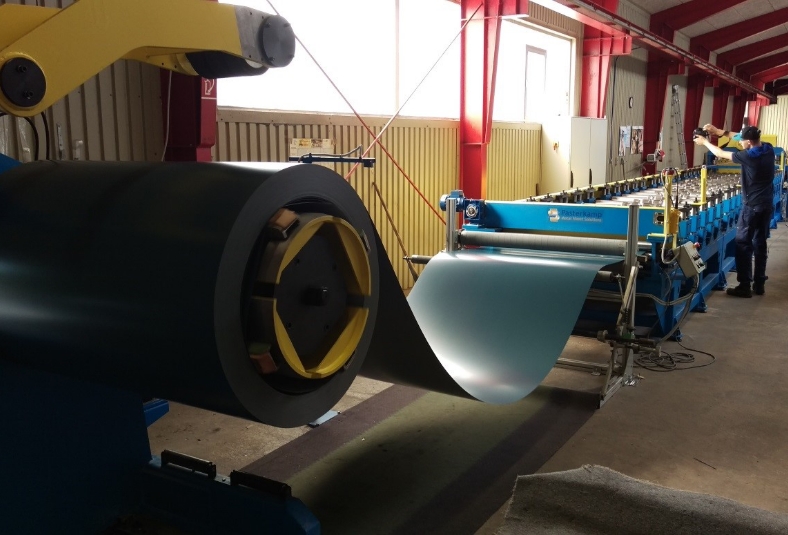
2. Straightener
Before punching, the material must first be flat-stretched so as not to get stuck in the tools. These come in several varieties. From single rolls to more than 21 stretch rolls. Precision pullers are called levelers. These have support rolls to keep the stretch rolls straight, or not.
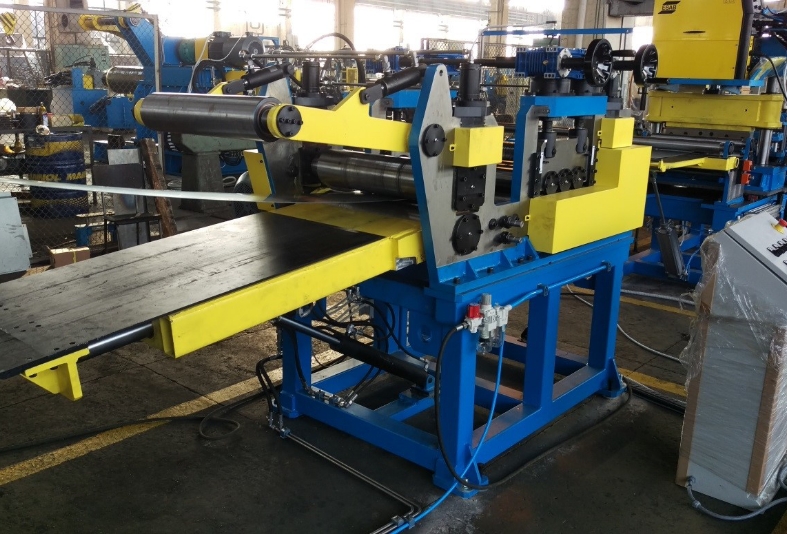
3. Punching installation
A punching system consists of a single punch or a combination of several, interchangeable, punches. It is also possible to add a servo-controlled punching machine to the line.
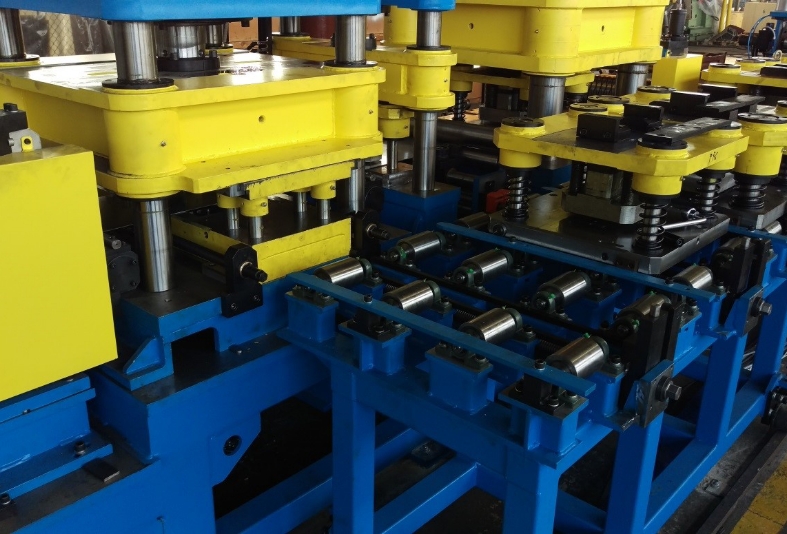
4. Roll Forming Machine
The roll forming machine is composed of several stations with profile rolls. These can be exchanged for a different profile or placed on a so-called exchangable cassette. This provides fast changeover times when multiple profiles are produced on the same line.

5. Cut-off installation
When working not with separate sheets, but from coil, the profile should be shortened at the end of the roll forming line:
– With a hydraulic cutter
– With a crosscut saw.
The choice depends in part on the complexity of the profile. Depending on whether it is a continuous or a start/stop roll forming process, the trimming or cutting can also be carried out along with the rollforming (this is called a flying shear).
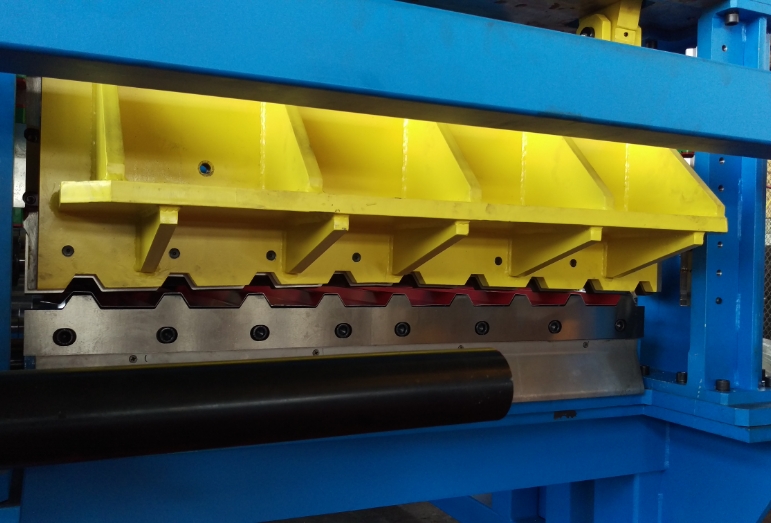
6. Stacker
After trimming, profiles can be stacked as desired by the user.
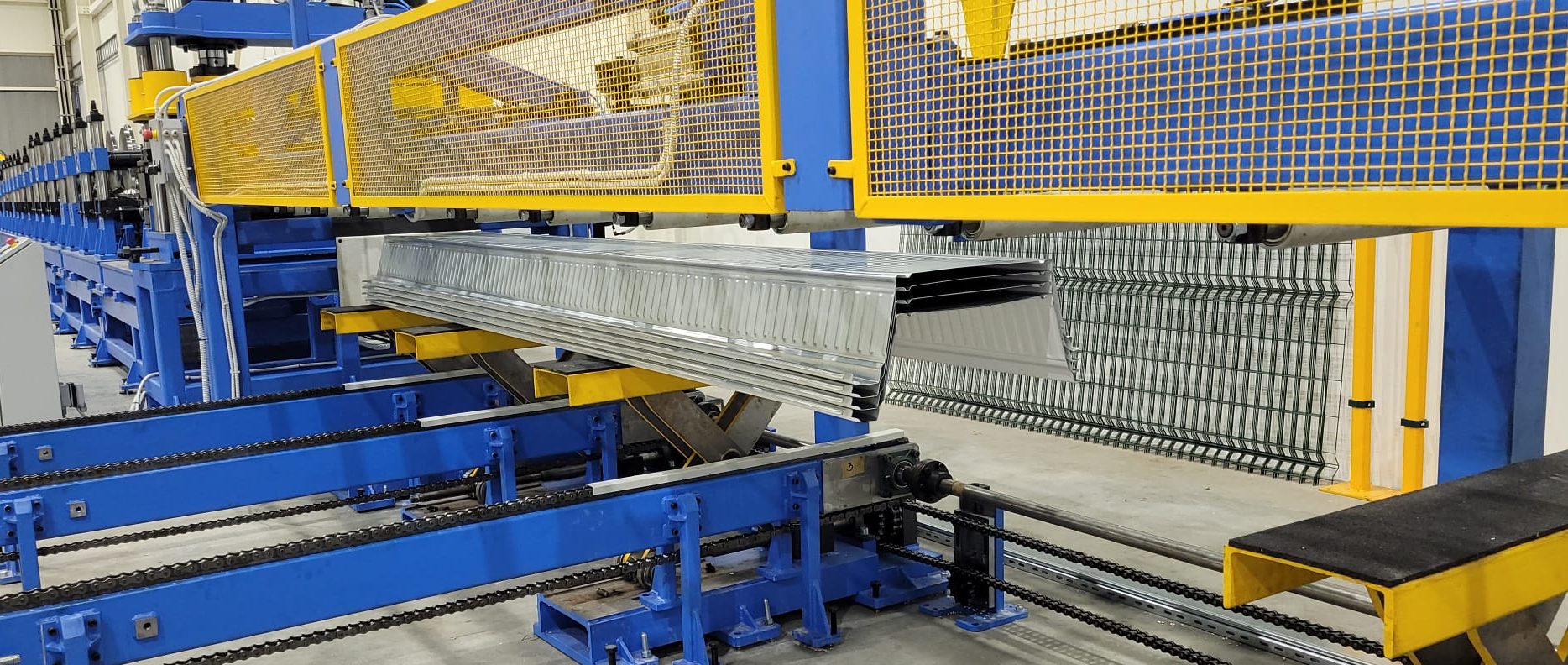
Applications of Roll Forming
Roll forming is widely used in various industries because of its versatility and efficiency. Some common applications include:
- Construction industry: For the production of roof panels, roof cladding, wall cladding, structural profiles and structural elements.
- Greenhouse construction: For the production of greenhouse cultivation gutters.
- Automotive industry: For the production of body parts, such as door and window frames.
- Industrial applications: For producing frames, pipes and other structural components.
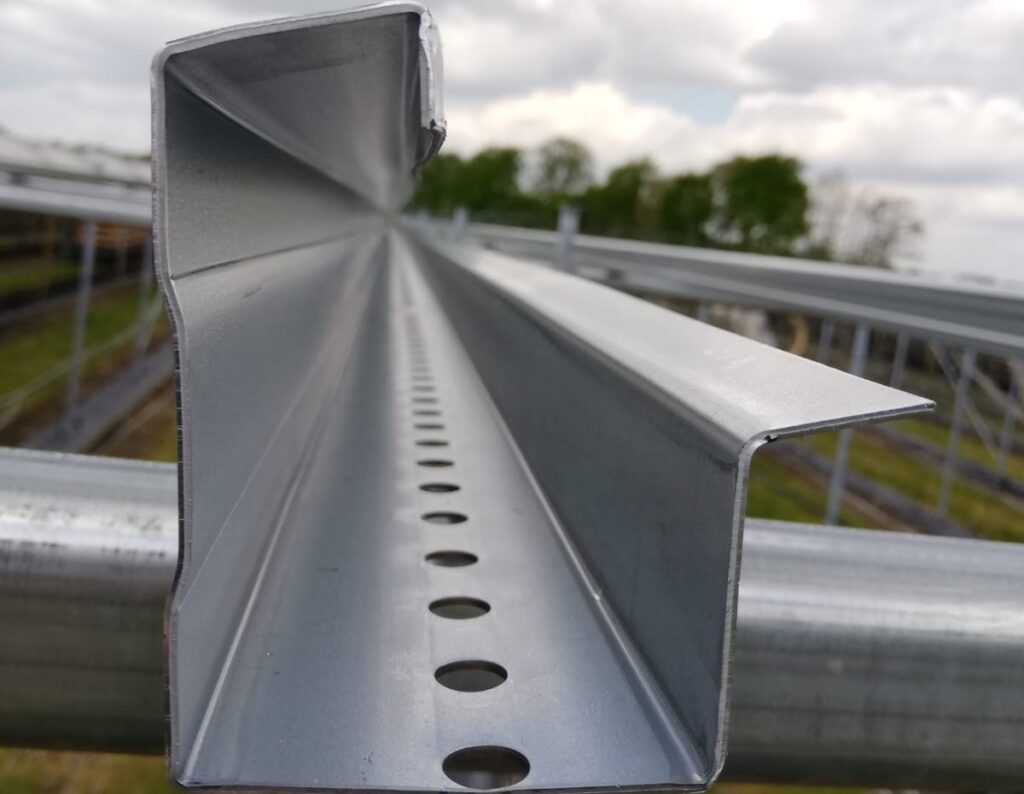
Benefits of Roll Forming
Roll forming offers several advantages over other production methods, including:
- High production speed: The process can be run continuously, resulting in rapid production.
- Accuracy: The shape of the final product is consistent and accurate thanks to the precision of the rolls.
- Material savings: Roll forming minimizes waste, resulting in cost savings and improved durability by efficiently using the metal
Roll Forming: An Indispensable Link in the Production Chain
All in all, roll forming has become an essential part of the modern manufacturing industry. It provides an efficient and cost-effective way to produce complex metal profiles for a wide range of applications. Due to its versatility and advantages, roll forming is expected to remain an integral part of the global production chain.
